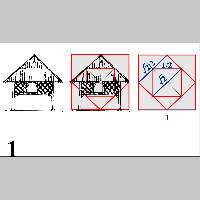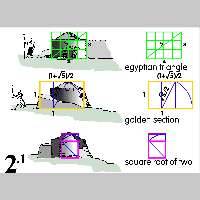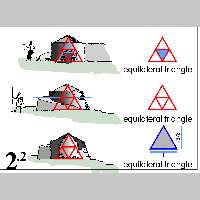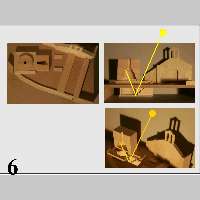

 dr Borut Juvanec
dr Borut Juvanec
The Purpose, Results and Use of Analysis on Stone Constructions
Scientific research is based on the analysis whose results unveil the principles of construction, composition, execution and usage.
The difficulty of analysing stone shelters derives from the fact that any construction made of stones of different size and shape poses particular demands on the builders wishing to incorporate elements of heritage and thus the characteristics of the architecture pertaining to a particular period in time, place and nation into their compositions.
Dry-stone walls have three main technical characteristics:
- corbelling or slanting stones acquiring the shape of a circle in the ground plan and a system of switching in the cross-section,
- an equilateral triangle with three sides of the same length and three 60-degree angles,
- the sides are 1 unit long, thus making the triangle of a height equalling the square root of three halves.
The above-described elements are found in all constructions where the dry -walling technique has been applied.
The analysis confirms that all the three elements are found in prehistoric monuments, especially in tombs, built several thousands years B.C., in old stone shelters, built several hundred years ago, and in present-day constructions which, in spite of progress and time continue to emerge.
The scope of any analysis is to produce practical results. Thus we are now able to reconstruct some of the prehistoric constructions, such as the hypogeum with the temples of Mnaidra, Zgantia and Hagar Qim in Malta and the example of Šuplja gromila in the vicinity of Šibenik in Croatia indicates the application of the same constructional approach as similar monuments in the 11th century Italy. Physics and astronomy have similarly been of considerable help with the unveiling of the usage of Sant'Anastasia, a holy fountain in Sardinia.
The point is that the recognition and analysis of the construction principles of our ancestors walk hand in hand with the understanding of their knowledge and their modern applications.
Za povečavo kliknite na sliko
Click on picture to enlarge


 dr Borut Juvanec
dr Borut Juvanec






